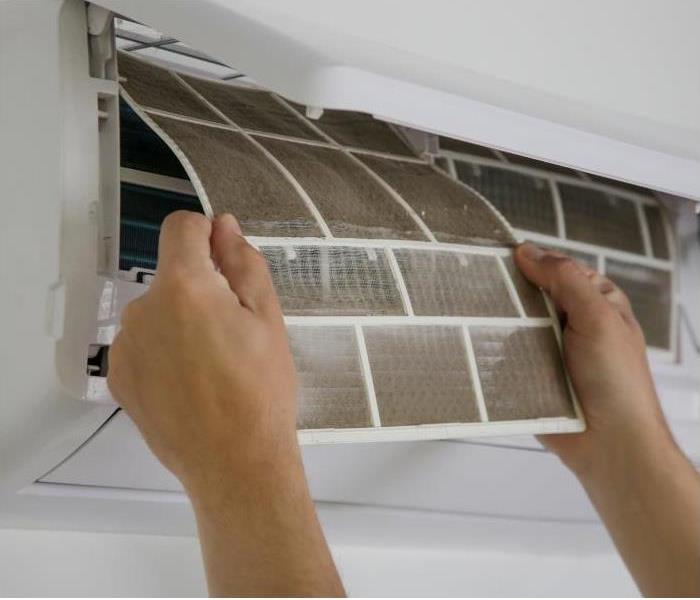The Importance of Air Quality Testing in Mold Remediation
11/10/2023 (Permalink)
Key Takeaways:
- Indoor air quality testing is important in mold remediation.
- Testing ensures complete removal of mold and improves indoor air.
- Proper air quality testing can prevent further mold issues.
- Property managers and homeowners should invest in air quality testing.
Indoor air quality is essential to the health and well-being of people living in a home or working in an office. Unfortunately, mold growth can often cause poor indoor air quality. Mold is a common problem in homes and buildings, and it can cause a variety of health problems, including respiratory issues, allergies, and asthma. If you suspect mold growth in your property, it’s important to act quickly and hire a professional remediation company, such as SERVPRO of South and Northwest Grand Rapids, to address the issue. In this article, we’ll explore the importance of air quality testing in mold remediation.
What is Mold Remediation?
Mold remediation is removing mold from a building to prevent further growth and protect the health of its occupants. The process involves identifying the source of the mold growth, containing the area to prevent spores from spreading, removing the mold, and cleaning and disinfecting the affected surfaces. If not handled properly, mold can quickly spread and cause significant damage to the property and the health of the occupants.
Why is Air Quality Testing Important in Mold Remediation?
Air quality testing is an essential aspect of mold remediation. While it may seem like the mold has been completely removed, spores can still be present in the air and cause health problems for the occupants. Air quality testing can identify any remaining mold spores in the air and ensure that the remediation process was successful in eliminating all traces of mold. Air quality testing can help identify other potential issues with the indoor air quality, such as high humidity levels or poor ventilation, which can lead to future mold growth.
The Air Quality Testing Process
Air quality testing involves taking samples of the air and analyzing them for mold spores. The samples can be taken from the affected area or throughout the entire property, depending on the situation. The samples are sent to a laboratory for analysis, and the results are typically available within a few days. The analysis will provide information on the type and concentration of mold spores present in the air. If the results indicate that mold spores are still present, further remediation may be necessary.
Preventing Future Mold Growth
Air quality testing can also help identify potential issues that can lead to future mold growth. For example, high humidity levels can create a breeding ground for mold, so it’s important to maintain proper humidity levels in the property. Poor ventilation can also contribute to mold growth, so it’s important to ensure that the property has proper airflow. Identifying and addressing these issues can help prevent future mold growth and improve the overall indoor air quality of the property.
Final Thoughts
Air quality testing is a critical component of the mold remediation process. It ensures that all mold has been properly removed and provides valuable information on the indoor air quality of the property. By investing in proper air quality testing, property managers and homeowners can protect the health of the occupants and prevent future mold growth. If you suspect mold growth in your property, contact a professional remediation company like SERVPRO of South and Northwest Grand Rapids to address the issue promptly and efficiently.




 24/7 Emergency Service
24/7 Emergency Service
